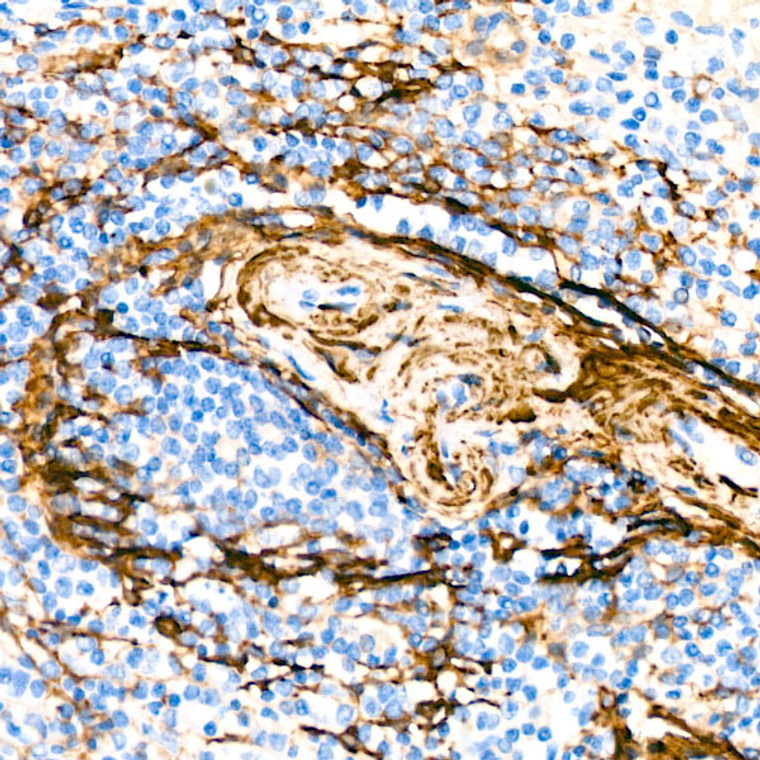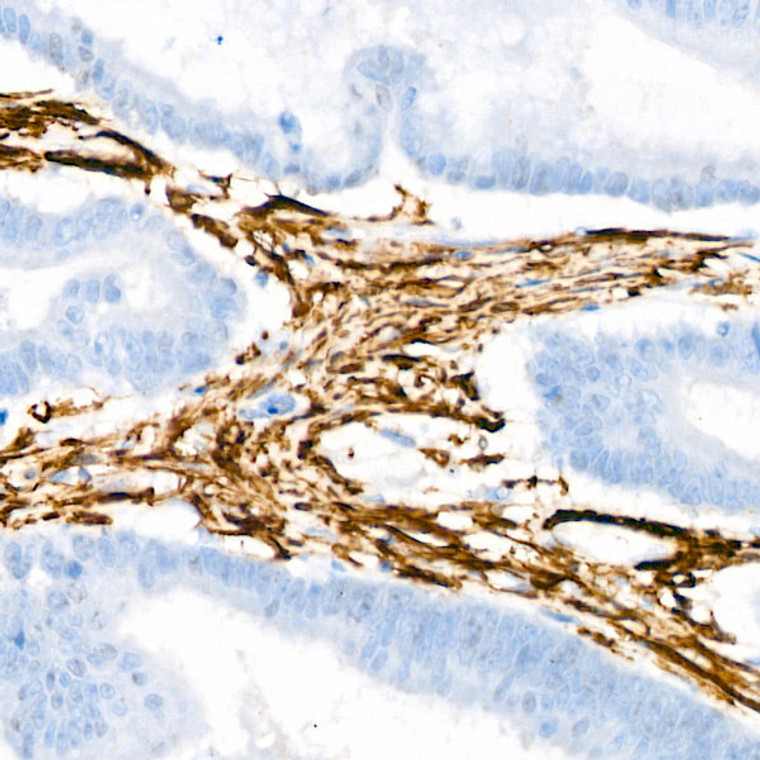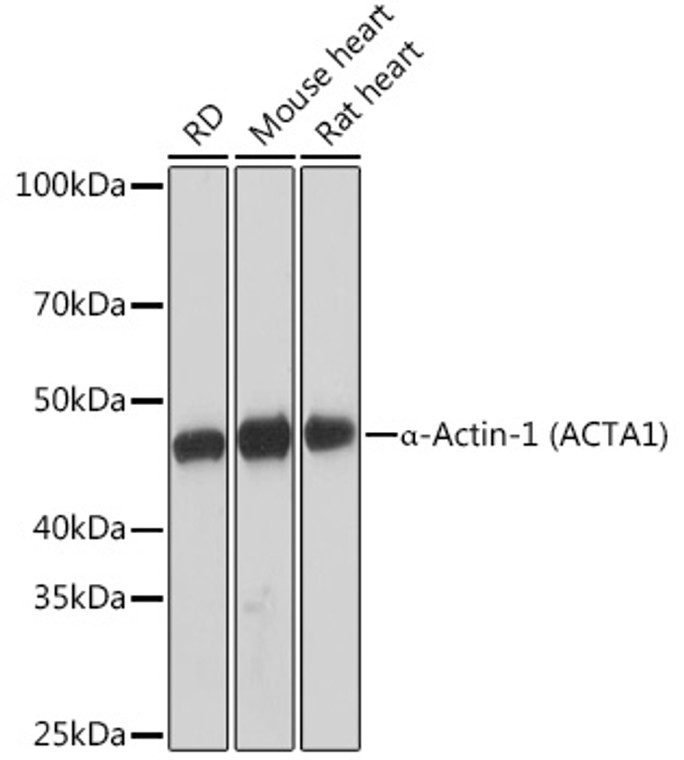| Host: |
Rabbit |
| Applications: |
WB/IHC/IF |
| Reactivity: |
Human/Mouse/Rat |
| Note: |
STRICTLY FOR FURTHER SCIENTIFIC RESEARCH USE ONLY (RUO). MUST NOT TO BE USED IN DIAGNOSTIC OR THERAPEUTIC APPLICATIONS. |
| Short Description: |
Rabbit monoclonal antibody anti-ACTA1 (278-377) is suitable for use in Western Blot, Immunohistochemistry and Immunofluorescence research applications. |
| Clonality: |
Monoclonal |
| Clone ID: |
S8MR |
| Conjugation: |
Unconjugated |
| Isotype: |
IgG |
| Formulation: |
PBS with 0.02% Sodium Azide, 0.05% BSA, 50% Glycerol, pH7.3. |
| Purification: |
Affinity purification |
| Dilution Range: |
WB 1:500-1:1000IHC-P 1:50-1:200IF/ICC 1:50-1:200 |
| Storage Instruction: |
Store at-20°C for up to 1 year from the date of receipt, and avoid repeat freeze-thaw cycles. |
| Gene Symbol: |
ACTA1 |
| Gene ID: |
58 |
| Uniprot ID: |
ACTS_HUMAN |
| Immunogen Region: |
278-377 |
| Immunogen: |
A synthetic peptide corresponding to a sequence within amino acids 278-377 of human Alpha-Actin-1 (ACTA1) (P68133). |
| Immunogen Sequence: |
ETTYNSIMKCDIDIRKDLYA NNVMSGGTTMYPGIADRMQK EITALAPSTMKIKIIAPPER KYSVWIGGSILASLSTFQQM WITKQEYDEAGPSIVHRKCF |
| Post Translational Modifications | Oxidation of Met-46 and Met-49 by MICALs (MICAL1, MICAL2 or MICAL3) to form methionine sulfoxide promotes actin filament depolymerization. MICAL1 and MICAL2 produce the (R)-S-oxide form. The (R)-S-oxide form is reverted by MSRB1 and MSRB2, which promotes actin repolymerization. Monomethylation at Lys-86 (K84me1) regulates actin-myosin interaction and actomyosin-dependent processes. Demethylation by ALKBH4 is required for maintaining actomyosin dynamics supporting normal cleavage furrow ingression during cytokinesis and cell migration. Actin, alpha skeletal muscle, intermediate form: N-terminal cleavage of acetylated cysteine of intermediate muscle actin by ACTMAP. Methylated at His-75 by SETD3. (Microbial infection) Monomeric actin is cross-linked by V.cholerae toxins RtxA and VgrG1 in case of infection: bacterial toxins mediate the cross-link between Lys-52 of one monomer and Glu-272 of another actin monomer, resulting in formation of highly toxic actin oligomers that cause cell rounding. The toxin can be highly efficient at very low concentrations by acting on formin homology family proteins: toxic actin oligomers bind with high affinity to formins and adversely affect both nucleation and elongation abilities of formins, causing their potent inhibition in both profilin-dependent and independent manners. |
| Function | Actins are highly conserved proteins that are involved in various types of cell motility and are ubiquitously expressed in all eukaryotic cells. |
| Protein Name | Actin - Alpha Skeletal MuscleAlpha-Actin-1 Cleaved Into - Actin - Alpha Skeletal Muscle - Intermediate Form |
| Database Links | Reactome: R-HSA-390522 |
| Cellular Localisation | CytoplasmCytoskeleton |
| Alternative Antibody Names | Anti-Actin - Alpha Skeletal Muscle antibodyAnti-Alpha-Actin-1 Cleaved Into - Actin - Alpha Skeletal Muscle - Intermediate Form antibodyAnti-ACTA1 antibodyAnti-ACTA antibody |
Information sourced from Uniprot.org
12 months for antibodies. 6 months for ELISA Kits. Please see website T&Cs for further guidance












